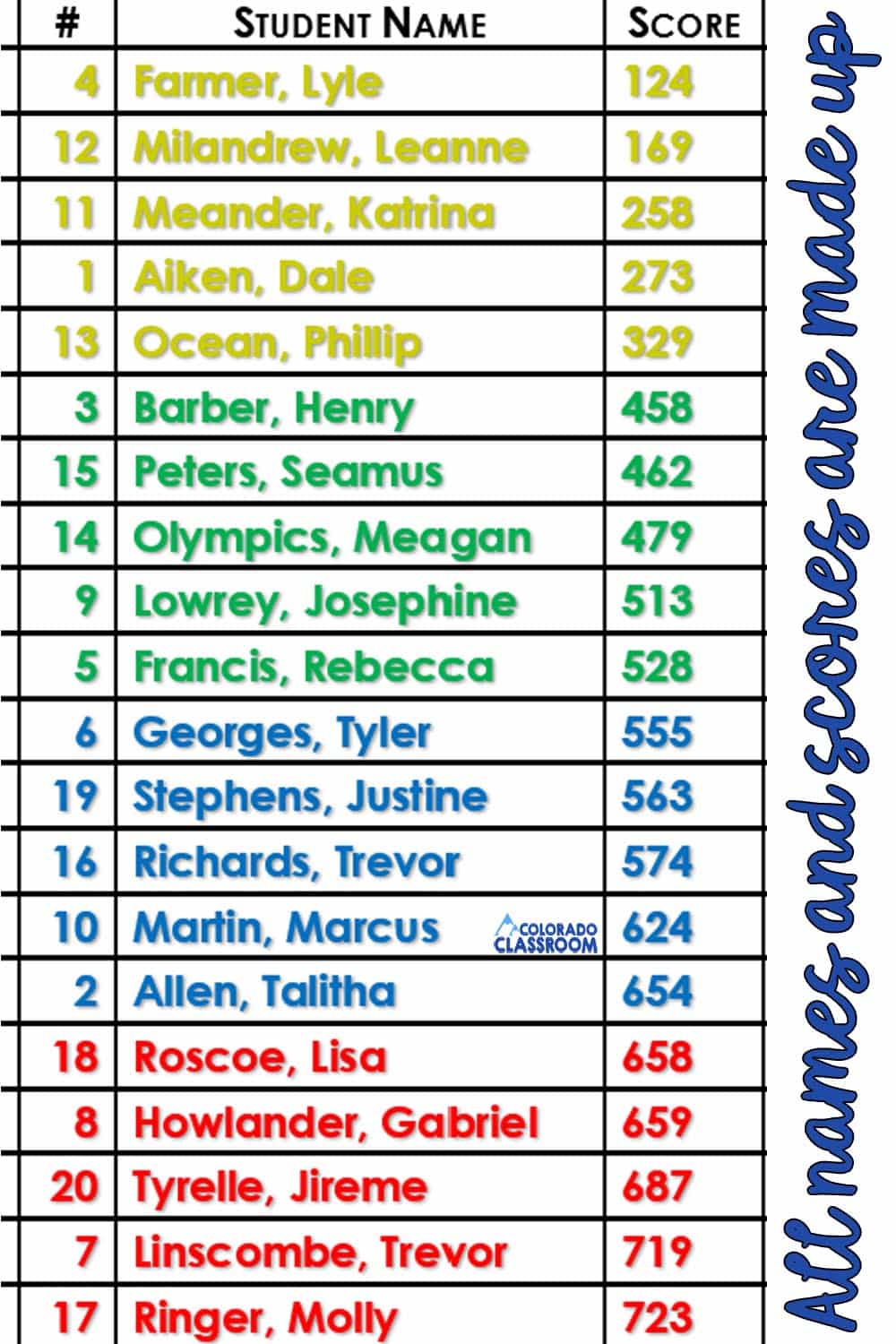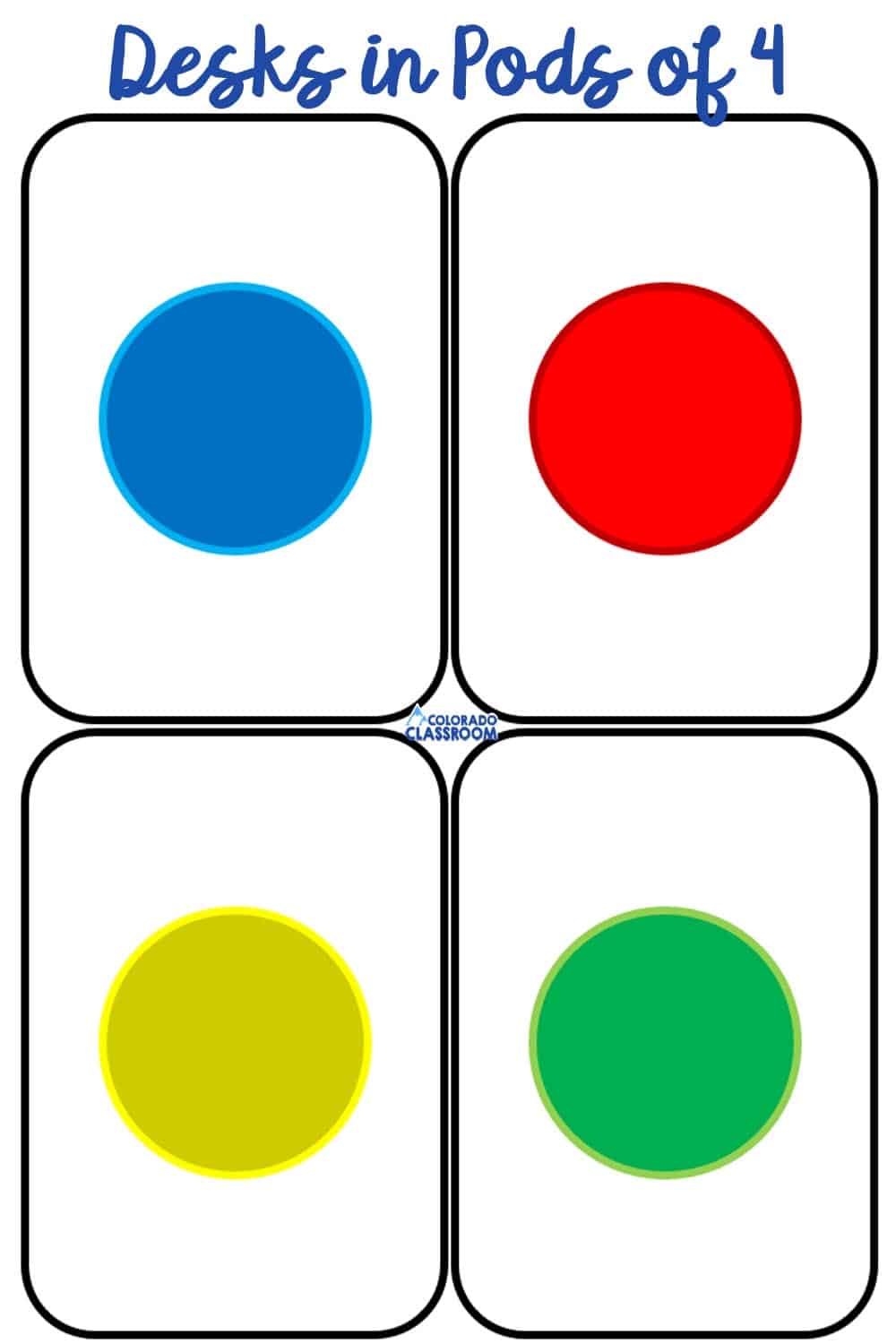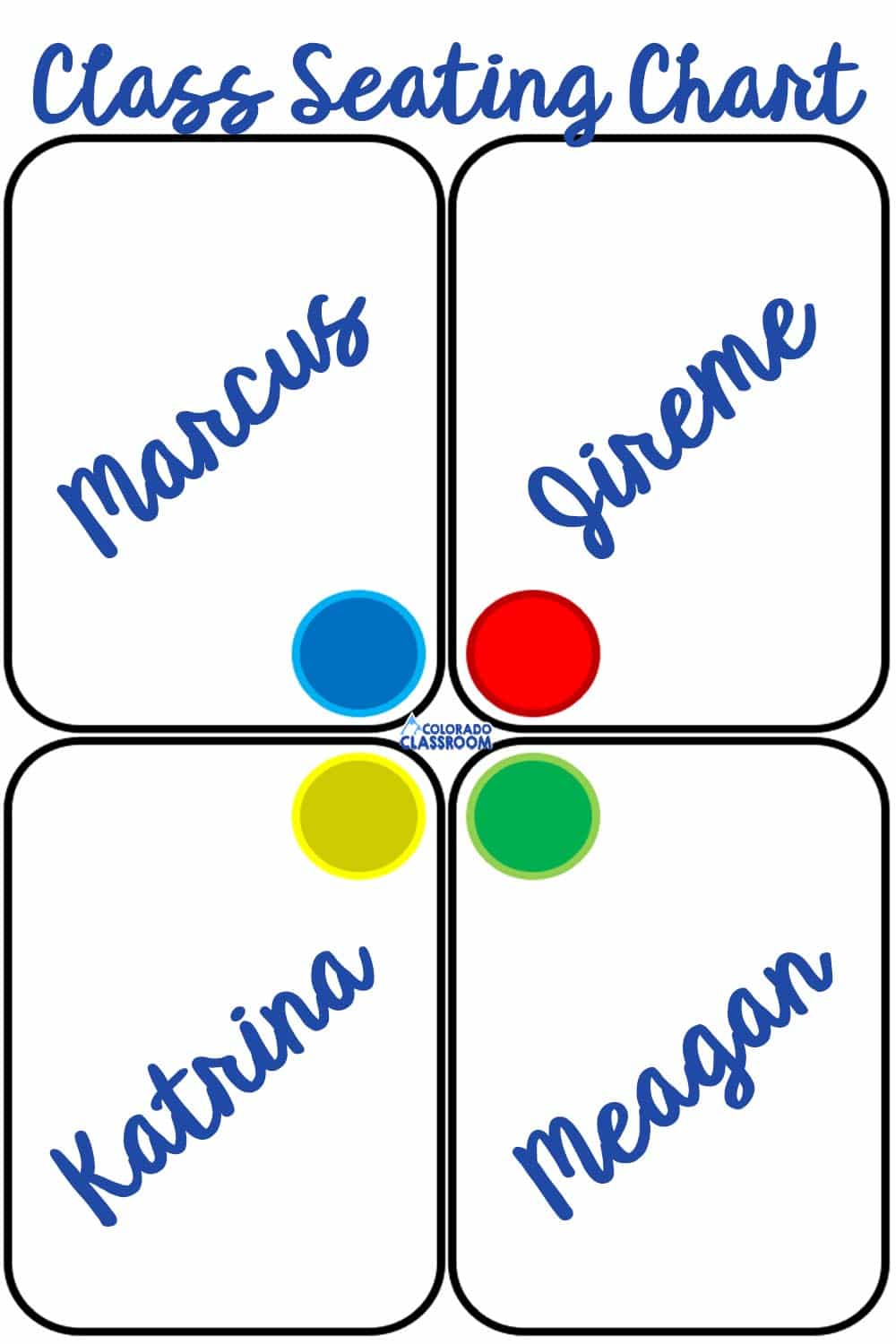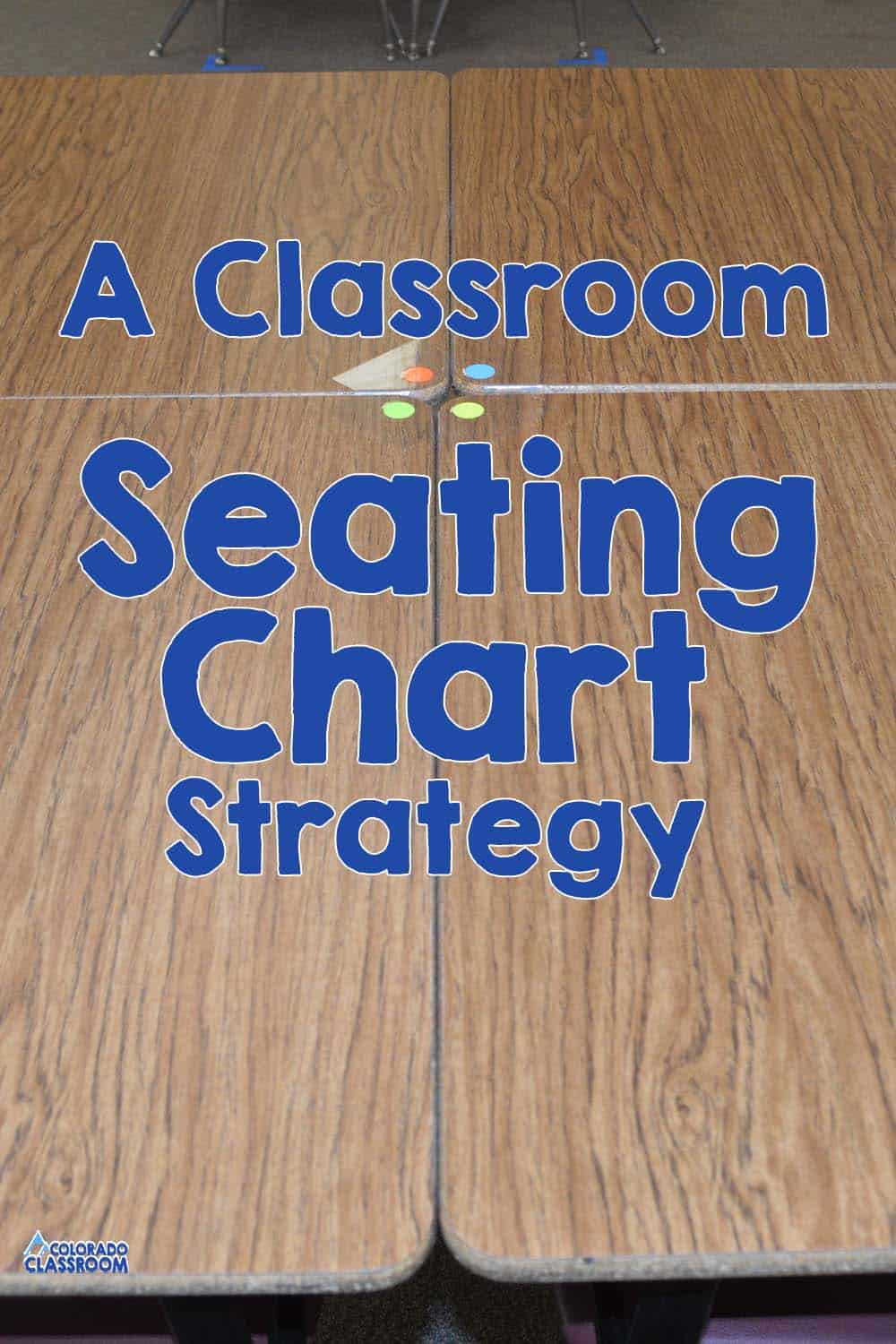A Seating Chart Strategy to Increase Impact in the Classroom
I want to discuss seating charts, but first let’s start with some definitions. Heterogeneous is to be diverse in character or content while homogeneous is to be the same kind or alike. It is very important that we understand those two words and know what we are trying to accomplish before we, as teachers, try a classroom seating chart strategy that just won’t work.


I group heterogeneously, and I do so in a very systematic process. It is a seating chart strategy that was conveyed to me by one of my administrators, who had read it in a book. I have since tried to find the book to give you the direct source, but to no avail.
As you can see here, I like color. If you would like to read about Organizing Your Classroom with Color, check out this post.
Steps to Strategically Seating Your Students
To correctly utilize this seating chart strategy, you will need standardized scores for your students. You may use any assessment you would like to, or you can use a conglomerate score. We take MAPS tests at our school, so those scores are what I use to group and seat my students.

You will also need to place the desks in groups of four (pods, rows, etc.) for this seating chart. Then mark the desks in such a way that every four desks have the same demarcation. I use four colored dots (pink, green, yellow and blue) These are the stickers I use.
(This is an affiliate link. As an Amazon Associate I earn from qualifying purchases.)
There’s nothing stopping you from using animals, planets, numbers, or other stickers, however, for your seating chart. The demarcation of the stickers directly relates to the group the student is in based on their test score. So in my case, red is for the highest group. You might choose for that to be the koalas, planet Mars, or anything else.
Now, how does this work? Well, studies show that I can bring up my lower students by pairing them with higher students. Being exposed to the higher-level thinking processes, verbal expressions, and greater growth mindset of other students will often rub off on the lower students and result in some positive and lasting effects. I need to be careful; however, as those same studies show that I can bring down my highest kids if I’m not vigilant and very purposeful in how I match those interactions.
The Dinner Party Effect

This is where the real work comes in to play. If you’ve ever sat back and watched a dinner party, you’d notice that people tend to talk to those right next to them, on their left or right, or those directly across from them. But what doesn’t happen very often is for conversations to start up diagonally. Thus, if we place our highest and lowest students diagonally across from each other, they are less likely to affect one another. Instead the low student makes connections to the two middle students sitting across and next to them, and the high student does the same.
Using the colors on the pod for an example, the yellow sticker, Katrina, would be a student from the lowest group. Meagan’s sticker is green. She would be a kid from the third group. Blue would be a kid in the second group, in this case Marcus. And Jireme, the red sticker, would be the student from the highest group. So Katrina would talk mainly to Marcus and Meagan, rarely interacting with Jireme, the highest student in the pod. While Meagan would interact most with Katrina and Jireme, but would rarely get the benefit of what Marcus has to say.
Steps to Seating Your Students (Condensed)
Step 1 is to list your students from highest to lowest score
Step 2 is to then split them into four even groups.
Step 3 is to take one student from each group and place them together into a pod.
Step 4 is to arrange your pod following the placement guidelines.
A Caveat & Final Thought

Now let me add one caveat here…our classes are already grouped by ability so there is not a radical difference between the top and bottom students. If this was truly a heterogeneous group I would probably want to rethink my seating chart arrangements some more. Seating purely by scores on one performance can be misleading and not always ideal.
Yet I urge you to give this type of grouping a try and see what happens with your students and their overall abilities. If you can raise the scores of your lowest learners simply by having them surrounded by higher learners, then it’s a win-win situation.
How do you group your students? Let me know in the comments.

—>Thanks to the wonderful comments, I have learned that this is a Spencer Kagan seating chart technique. You can learn more directly from the source, by checking out their blog post here.


I know that this is an old blog, however I want to disagree with part of your grouping. Yes, grouping lower with high will help improve your lower students but placing the dots will assign a stigma to that "not yet" student. No matter the age, students are smart and will decode your system. Why not just group them without placing a color code to them.
I use colour dots to pass out materials. Blue dots come get the glue for your table. Etc
Your seating arrangement system sounds a lot like Spencer Kagan's cooperative learning. It's very effective if used correctly and consistently.
After many years of teaching, later in each year, I had students make the seating arrangement. They talked it out together. Ground rules included everyone had to be willing to try it, if someone thought it would not work, they went back to the drawing board. Another, was that it had to be arranged so they would be able to get along with their neighbors and focus. Putting it on them gave my primary students the power, and they always worked it out.
Your idea sounds like Kagen Cooperative Learning Strategies. I used this method for years and found it very useful. Some years I have all of the students in rows, at least for a time, so they are facing the board. That strategy is from Teach Like a Champion. For the naysayers, I used the colored dots, or numbers, for classroom jobs. The kids never figured out high, medium high, medium low, or low. After 23 years of teaching, I can recommend this method.
Pingback: Starting the New Year off Right - The Colorado Classroom
This is a Kagan strategy that uses A-D rather than colored dots.
I think this is a great strategy. I just completed my 27th year of teaching elem school. The only thing I’ve witnessed is we must also pay attention to personalities. Unfortunately there is no one size fits all. But this seating arrangement, along with the “U” or Horseshoe, are my favorites.
I would be cautious linking any of this to cooperative learning. Cooperative learning has intentional outcomes for learning and applying skills within the context of curriculum. The skills are not connected to ranking students highest to lowest based on academics. It’s unfortunate this system (or the explanation of the system) does not seem to value the strengths of students outside of academics or even within the variety of academic subjects (EG English vs visual Arts).
Thank you for your thoughts, M. I agree that this is a delicate process that does not consider all pieces of a student. In my own blog post, I do state, “Seating purely by scores on one performance can be misleading and not always ideal.” However, since I was only a math teacher, I did feel as if I could look at math scores alone to help seat my students and gauge who was good at math and who needed more assistance. You are right though, I definitely would not use this strategy in a self-contained classroom.